Don't wanna be here? Send us removal request.
Text
Hi Morvarid,
You did an excellent job unpacking the Edward Hyams quote and connecting it back to nature interpretation this week! Preserving the past and maintaining integrity through knowledge helps us develop a deeper understanding of ourselves now and predictions for the future— traveling beyond our time spent at the railway station.
I love the points you made when linking these lessons learned through the quote (the significance of history interpretation) to environmental matters. Analyzing long-term environmental data? Learning about natural disasters? Re-evaluating urbanization? They can all help us create predictions and plans for the present/future, which is made possible through maintaining the integrity of our previous interactions with nature!
The big ideas you listed reminded me of another example here at the University of Guelph— the Herbarium. The Herbarium is operated by the Biodiversity Institute of Ontario, and houses approximately 100,000 specimens from around the world! They have a rich collection of decades of well-documented, pressed, and mounted plant samples. Through labelling the taxonomy and collection information such as location, time, habitat, Indigenous repository knowledge, and collectors of each piece, the historical integrity of every sample is maintained. These samples (and tracking our past experiences with them) can help with future identification references, plant research, and forensic botany predictions. They serve as a reminder that every element of our environment has a story to tell!
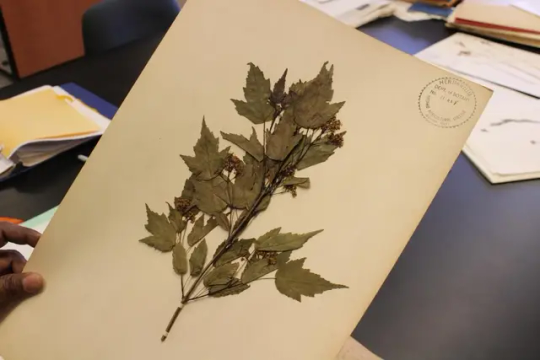
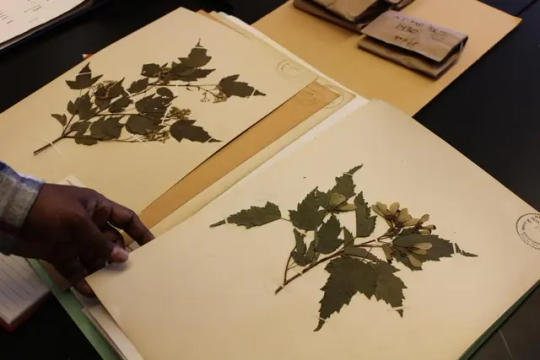
Wrapping up by relating your understanding of the quote to the National Park Service course video, Yellowstone National Park, and Johnston Hall really helped put everything into perspective. I’m currently a Resident Assistant living in Johnston Hall, so it’s wild to think about the history carried within the walls of my own bedroom! Overall, seeing communities learning from history, maintaining the integrity of an ecosystem, and saving a space to be enjoyed is incredible. Thanks again for sharing your perspective on the quote and some food for thought this week!
Sam🌿
Blog #6:Nature Interpretation through History
Unpack this quote.
👇🏼
"There is no peculiar merit in ancient things, but there is merit in integrity, and integrity entails the keeping together of the parts of any whole, and if these parts are scattered throughout time, then the maintenance of integrity entails a knowledge, a memory, of ancient things. …. To think, feel or act as though the past is done with, is equivalent to believing that a railway station through which our train has just passed, only existed for as long as our train was in it."
(Edward Hyams, Chapter 7, The Gifts of Interpretation)
This quote from Edward Hyams is very simple. Although Edaward’s taste in writing has articulated it perfectly. This quote explains to us that just because something is old it does not make it valuable undoubtedly. Value is in something that owns “Integrity”. What does integrity mean? Integrity means the state of being undivided and unified. Integrity is required for different elements to work harmoniously and to function. Now, the elements that create our whole existence are spread out throughout time. In order for us to preserve the integration between present and future, we need to study the past to not only be able to use our knowledge now but also use it for predictions in the future.
Edward uses a metaphor to make this quote more understandable and help us picture the importance of studying history. If you think that the past is done and should be forgotten; it is like thinking that a railway station was there only when you were there and it’s like perceiving the railway as non-existent just because you are not there anymore. The railway and the station are part of a purposeful history apart from the time you got the privilege to pass through it.
This quote emphasizes the significance of studying history because we can learn from it and use this ancient knowledge to apply it to environmental matters.
You might think how can we apply our studies from the past to nature? We can use this knowledge in predictions, analyzing long-term environmental data, learning about natural disasters, reevaluating urbanization etc. There is so much more that i can think of and I'm sure you can. Don't forget to reblog your ideas for me to see what are your other examples.
As we saw in this week’s lesson, there was a video of a chief historian who works on national parks and analyzes the impact the Civil War had on the park and where and how some of the battles took place. This historian is another example that shows us that even though the Civil War took place many yeras ago, there's still a benefit in learning about its relation to nature. On the other hand, The war resulted in significant land use which drastically affected the ecosystem. The destruction that was followed by the war led to more appreciation from the people for nature. Peale decided to preserve the green areas and expand them to save the ecosystem. I looked up some of the post-Civil War national parks and “Yellowstone National Park” in the United States is one of the first national parks that was lawfully preserved in appreciation of nature. This is a perfect example where the community learned a lesson from the past and tried to alter their future. National Parks are not man-made but they are parts of nature that are designated to be saved and enjoyed by humans in order to be looked after and taken care of.

In this blog, I have tried to write considerately to not only write what my viewers want to read but also share my wisdom through my words (Beck & Cable, 2018).
Here is an old picture from Johnstone Hall in Guelph from 1960 for you to take a fun little moment to compare the building and the ecosystem with what you see today in 2023.

6 notes
·
View notes
Text
Unit 06: Keeping Memories Alive🪺
Hi fellow interpreters! I hope everyone is doing well and enjoyed learning about nature interpretation through a historical lens this week. History interpretation helps us understand ourselves, where we have been, and why we are the way we are— all of which are highly linked to our natural environment. I think “Chapter 15: Interpreting History” in our Interpreting Cultural and Natural Heritage for a Better World textbook highlighted this concept well when explaining that every natural site contains a history and every historic site has natural resources. Both nature and history interpretation are often offered at the same site and, like all interpretation techniques, are about making the subject engaging, inspiring, and personally meaningful.
This morning, I visited the Art Gallery of Guelph to take a break from coursework and observe the current exhibits. The displays beautifully combined our recent prompts: nature, visual art, and history. In particular, I was mesmerized by The Third Scenario (curated by Holly Chang) and Carl Beam: Pieces of a Puzzle. The history, culture, and natural influences carried within each piece really inspired me while delving into the prompt this week. I recommend checking out the gallery if you have some free time on campus!

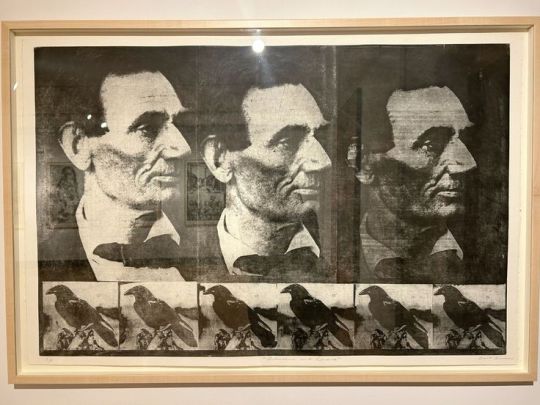
This week, we were asked to unpack the following quote:
There is no peculiar merit in ancient things, but there is merit in integrity, and integrity entails the keeping together of the parts of any whole, and if these parts are scattered throughout time, then the maintenance of integrity entails a knowledge, a memory, of ancient things. …. To think, feel or act as though the past is done with, is equivalent to believing that a railway station through which our train has just passed, only existed for as long as our train was in it. (Edward Hyams, Chapter 7, The Gifts of Interpretation)
Hyams begins by explaining that the mere fact something is ancient does not mean it holds value on its own (age does not equate to worth), and that real value lies within maintaining the integrity of that something. Already, I find myself relating to the quote— the most valuable objects in my life are those with a story. He then goes on to define integrity as the “keeping together of the parts of any whole”, implying that preserving the cohesion and unity of something is what truly maintains integrity. If these components are “scattered throughout time” in the form of a story, then preserving integrity takes knowledge and memory of these ancient things. As explained when introducing history interpretation, this combination of knowledge, memory, and story (maintaining integrity) helps us understand ourselves, where we have been, and why we are the way we are— hence why preservation through writing is so crucial!
The remainder of the quote uses a railway station metaphor to illustrate the importance of the past. If we disregard the history something holds, thinking, feeling, or acting as though the past is done with, it is equivalent to believing a railway station we’ve just passed through only existed while our train was in it. In reality, the railway station existed far before and after our train passed through, just as the past continues to shape our present and future.
The finishing sentiment from Hyams reminds me of a quote by David McCullough from “Chapter 15: Interpreting History” of our textbook: “We need the past for our sense of who we are. We need the past for a sense of our civic responsibility, how all these benefits and freedoms came to us, and what it is our duty to protect”. Bringing ancient things alive with stories builds personal connection, and whether it is an artifact, tradition, or tree, this connection encourages further protection and preservation of integrity— a key aspect of nature interpretation too. Overall, I think Edward Hyams’ quote does an excellent job of encompassing the most significant role of history interpreters: keeping memories alive.
0 notes
Text
Hi there,
Thank you for sharing the mental benefits of living amongst animals and the beautiful relationship you share with Lilo this week— your honesty and love shined through! As a former animal foster parent (mainly kittens), I truly admire those who dedicate energy towards rescue.
The connection you described with Lilo hit close to home, reminding me of the story of my family cat, Delilah. In February 2019, I received a call about an older cat in need. For context, my family had already fostered 20 kittens at this point. Although I was in love with the never-ending cycle of rescuing and rehoming kittens, my mom and sisters were beginning to face the emotional struggles of never-ending goodbyes. Adoption was on their mind! It may seem silly to apply a “love at first sight” ideology to our relationships with animals, but I think we already knew on the drive home from the vet. I gave in and we decided to adopt Delilah for my younger sisters, knowing she was past the highly-adoptable kitten stage and would be good with other fosters in the home. These were my two (2) conditions. However, my “giving in to adoption” mentality quickly faded as Delilah became my backyard gardening partner, biscuit-making lap warmer, and best friend of five (5) years.




As you explained, the mental benefits of living amongst animals are widely discussed— I even catch my mood lifting when reading the Pets of the Month section from our University of Guelph student newspaper (The Ontarion). Yet, it is the nuances in individual human-pet relationships that make them so special. The emotional labour of life is exhausting, especially during semesterly peaks when school, work, and extracurriculars are demanding non-stop. During these times, I desperately miss the unspoken connection and grounding presence of Delilah— one of the hardest parts about living away from home. I’ve tried to cure this hole through therapy dogs or visiting the cat cafe (My Kitty Cafe) in downtown Guelph, but the reality is, nothing will compare to the undoubtable unconditional love from my favourite feline.

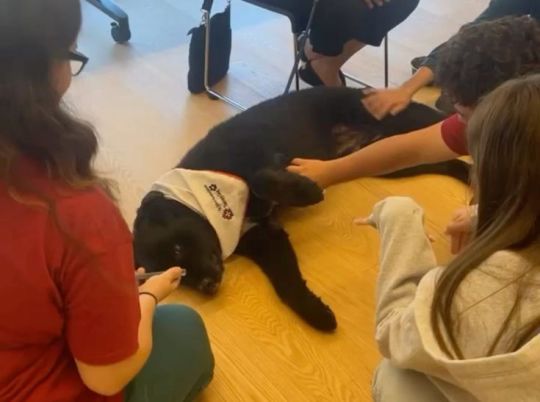
Overall, we share a similar story and inspiration for our studies. The mutual understanding between human-animal connections is a fascinating phenomenon that has inspired my relationship with nature as a whole too. I think your utilization of body-language cues with Lilo to further your understanding of wildlife at the rehabilitation centre this summer is incredible. I loved reading about how this relates to your nature interpreter dreams in the Unit 02 post! I'm looking forward to reading more about your passion for wildlife and nature interpretation thoughts this semester :)
Sam🌿
Blog 5
This week, I am especially grateful for my cat, Lilo. She is just over a year old and still quite small for her age. She is incredibly shy around other people, often running underneath my bed when I invite friends into my room, but when I’m home alone, she’s full of energy and constantly begs for attention. I grew up with cats, but had never considered adopting one of my own when I moved out until I found Lilo as a stray. Ironically enough, she was found as an unwelcome guest on a wildlife sanctuary I was volunteering at. The staff was not pleased to have a kitten ready to unleash her newfound hunting skills on the birds they had just rehabilitated. However, the minute I brought her home, she was welcome in my life. The mental benefits of having an animal are widely discussed as a general topic, but everyone’s specific relationship to their own pet is different. During the busier parts of my semester especially, I find myself feeling increasingly burned out and frustrated by everything. Between work, school, and a busy social life, I often feel that the world is constantly demanding things from me. However, when I come home to Lilo, her only demands are that I spend time with her and care for her. She is excited to see me regardless of whether I’m in a good mood or a bad one. It’s refreshing to experience this type of love when I so often feel that many aspects of my life are transactional, demanding my time, energy, and emotional labour.
I believe that the biggest part of what makes living with animals so beneficial for mental health is this unconditional, uncomplicated love. There is an inherent understanding between me and my cat; no words are said and yet I understand what she wants perfectly. The way people learn to communicate with their pets despite no common language is quite touching; the understanding and special attention we give to our animals is something I don’t experience in any other aspect of my life. I have plenty of people and activities I enjoy, but there is an undeniable bond between pet and human that I am incredibly grateful for. The mutual understanding between animal and human is a fascinating phenomenon, and it has certainly been a heavy influence on my own relationship with nature and even with wildlife. I feel that having this strong bond with my cat and having learned to pay attention to the ways in which she expresses her needs aided me in my job this summer, where I was working with wildlife. Domesticated animals are quite different from wild animals, of course, but the same attention to body language and determination to understand these cues helped me better understand the wildlife I was working with. My experiences both with wildlife and domesticated animals have shaped my relationship with animals and with nature, as well as encouraging me to reimagine how I communicate.
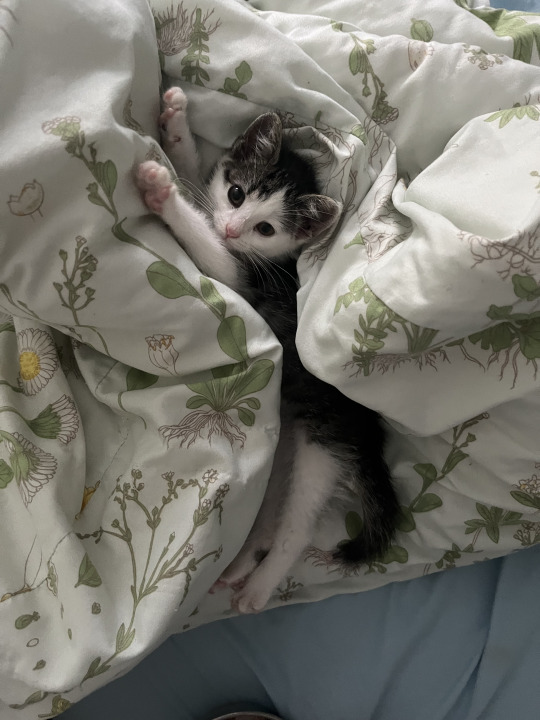
6 notes
·
View notes
Text
Unit 05: Summer Science Reflections 🌼
Hey fellow interpreters! I don’t know about all of you, but the last couple of weeks have been super busy. Between school, work, extracurriculars, and maintaining a healthy social life, Overwhelming October seems to have snuck up on me (yet again). During this time, fostering my relationship with nature is more crucial than ever. My coursework and extracurriculars are highly environment-focused (which definitely helps), but it’s the time spent in nature for no “productive” purpose that truly maintains my motivation and mental health— lots of laying in the grass, digging around for insects, and sporophyte observing during my seemingly limited spare time.


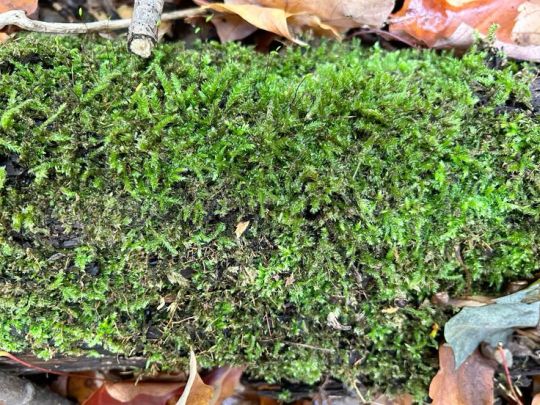

Amongst all of this university chaos, I’ve found myself reflecting on my summer position and all the exciting projects I had the opportunity to work on. My Research Assistant role was divided between two (2) teams, Plant Responses to the Environment & Biological Crop Protection, which meant so much learning across 18 different projects. Since we have no designated prompt this week (but still highlighted nature interpretation through science), I’d like to share two (2) of my favourite experimental and observational projects from the summer!
🌸Orchid Shelf Life Assessment:
The Orchid Life Shelf Life Assessment was a 60-day trial where moth orchids Phalaenopsis were randomly assigned to three (3) levels of watering maintenance (none, light, and optimal). The plants were received from the growing company in two (2) types of substrates (sphagnum moss-based and bark-based) and at three (3) stages of bloom (100% bloom, 50% bloom, 0% bloom). Our purpose was to test if varying substrates affected the physical health and appearance of the plants, which was done through chlorophyll content index (CCI), leaf thickness, flower dimension, spike length, and root biomass measurements. There was also lots of counting of florets and photos taken throughout the trial! Although all of the time spent watering, caring for, measuring, photographing, and entering data for these 200 orchids was part of my job, it truly felt like my “Passion Project” of the summer. I saw the project from start to finish, completed all the data collection, and also had the opportunity to write the Experimental Design, Measurements, and Data Collection portion of the final 23-page report— so rewarding! The orchids who live in my bedroom are now in their dormant stage, but every time I tend to them I am reminded of the many orchid friends I made this summer. The trial also inspired me to start learning about wild orchid species native to Ontario and look out for them on trails!

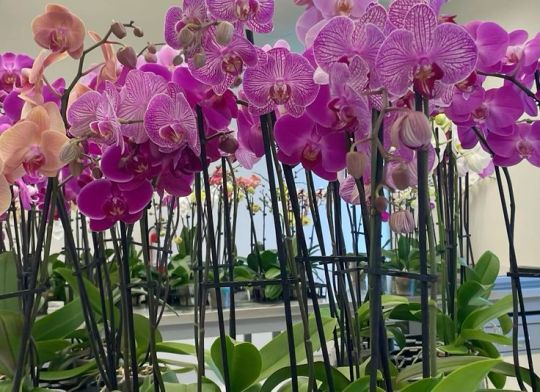
🪳Horticultural Insect Identification:
All of the Horticultural Insect Identification work had been a multi-faceted project spanning many years before I started the summer position, but I was lucky enough to get full training and make a contribution to the trials! The purpose was to gain a better understanding of how the diversity of insects in greenhouses has been shifting and test the effects of potential management solutions. Although always fascinated by insects, my previous horticultural experiences (whether through summer positions or coursework) had never focused on the microscopic identification of insect species. I wanted to learn all about plants, so why would I worry about insects to THAT level? However, this project really taught me how interconnected plant and insect relationships are. Understanding insects could, in turn, make me a better plant scientist! Between establishing predatory mite colonies, developing Petri dishes with samples collected from plant washes, learning about the nuances between different thrips species, and hours upon hours spent looking at a microscope, the phrase “you learn something new every day” was very applicable. My main identification role was onion thrips Thrips tabaci, western-flower thrips Frankliniella occidentalis, and two-spotted spider mites Tetranychus urticae at varying stages of growth (egg, larval 1, larval 2, and adult). However, lots of other critters made an appearance— my personal favourite were huge families of black bean aphids Aphis fabae.

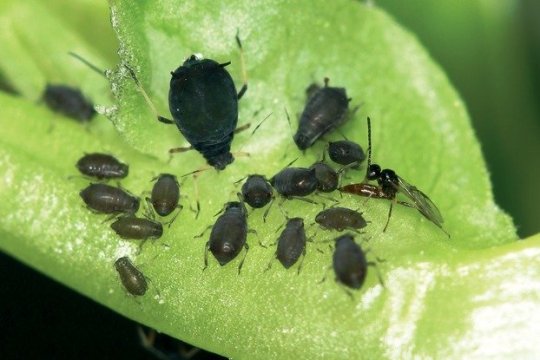
I’ve included a diagram establishing the differences between onion thrips and western-flower thrips below, which are approximately one (1) millimetre long when adults! Most notably, western-flower thrips have red ocelli and are far more hairy than onion thrips.
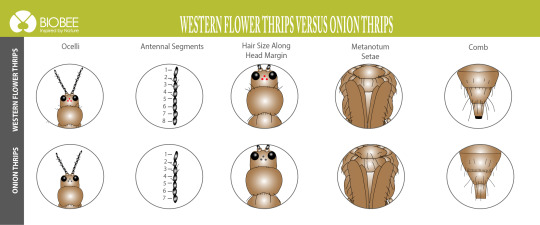
I'm always happy to chat about these summer projects or horticultural work as a whole, so if anyone has questions, please don't hesitate to ask! I'm looking forward to checking out everyone's ideas for the free prompt this week :)
Image Credits:
BIOBEE Inspired by Nature. Retrieved October 2023, from biobee-canada.com.
Vorburger, Christoph. Comparing constitutive and induced costs of symbiont-conferred resistance to parasitoids in aphids. Ecology and Evolution. Retrieved October 2023, from researchgate.net
1 note
·
View note
Text
Hi Jamie!
Thank you for the insightful interpretations you shared in your post this week. Your perspective on the intersection of art and science while perceiving nature was so refreshing— a lovely connection to how you find beauty in museums more than art galleries! I remember seeing infographics in my high school careers class about being a “left brain” or “right brain” person, where the left brain focused on numbers, technical language, and analytical thinking (science side) and the right brain allowed expression, emotional intelligence, and imagination (art side) to flow. We were encouraged to figure out which side led our lives through quizzes and self-reflection. At one's core, are they an artist or a scientist? Although this may be comforting for some, I think it is limiting for others. I’m getting a Bachelor of Science in Environmental Sciences, so that makes me a scientist, right? Yet, so much of my love for the study and desire to dig deeper into the systems at play is born from a place of artistic appreciation. They compliment each other so well! I love the way you connected these concepts back to evolutionary theory learned in your zoology classes, with each evolutionary trait contributing to something bigger.
Furthermore, your thoughts on travelling beyond aesthetic appreciation (“ooooooh so pretty”) and grasping the intricate web of life really showcased how beauty can be found within the interdependencies of species, ecosystems, and whole environments. In particular, the example about pollinator and flower relationships was perfect! Especially around this time of year, when we are surrounded by beautiful seas of goldenrod and aster. The mix of complementary colours is visually appealing to the human eye, but also shows the intricate relationship between the two species. Together, they attract a greater number of pollinators than either would growing alone— bees love the colour combination too!

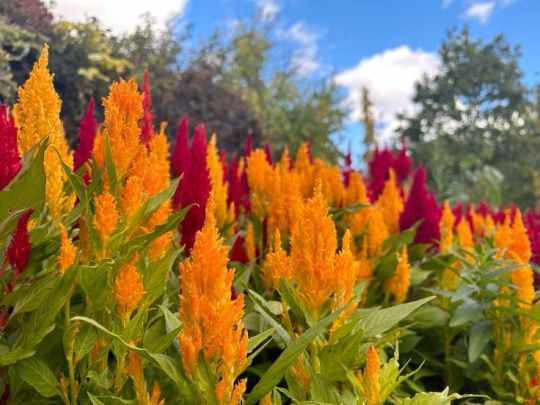
Overall, I completely agree that there is beauty in everything in nature (from the seemingly mundane to rare exotic species), all of which evoke ineffable feelings. Thanks again for sharing :) I’m looking forward to reading more about your thoughts on our relationships with nature this semester!
Sam🌿
Nature is art and we, (yes you!) are nature 🖼️🌷🫂(U4)
I was never necessarily interested in going to art galleries as a kid, but man, did I beg to go to the museum. A building with a collection of natures finest treasures and cryptic oddities sounded like a fun place the second I learned what it was, but I guess the beautiful art of paintings and sculptures didn’t quite do it for me. Even now, I much prefer museums to galleries (incoming likely an extremely controversial take🚨🚨🚨), with my personal trips to the Toronto ROMs natural history exhibit and my experience of seeing the Mona Lisa and other works in Paris’ Louvre being almost equally as exciting. (I will accept any science nerd comments with dignity, I know my truth.)
Thinking about who I am to interpret both nature through art and the gift of beauty, I’ve learned to notice that my perspective in nature interpretation sits on the intersection of science and art. In my opinion, it’s crucial to recognize that when interpreting, you don’t have to pick one or the other since they often compliment each other tremendously. In this week’s readings, I thought the quote “Our ability to perceive quality in nature begins, as in art, with the pretty,” is a perfect summary of how I feel I was initially drawn to nature; but I suspect my strong personal preference to the living art comes from the many why’s and how’s to be asked of it. While the answer “because the artist thought so” is perfectly acceptable to me in most cases when inquiring about a painting or something, the questions begging to be asked by nature- like where it comes from or why it does something- inspire me to take part on a much deeper level. Furthermore, with an ongoing education in zoology, concepts like evolutionary theory sort of promote the “everything has happened for a reason” ideology in a sense , since the evolution of a trait had to have been advantageous to persist, making everything so much more incredible. To be so in love with nature is of course to understand not everyone is on the same page, as I could spend my whole life trying to convince others that the gift of beauty is in everything outdoors, but I’ll stick to just you guys for now 😊
To me, the gift of beauty that’s to be found in nature is so much more than aesthetic appreciation, and I’ll try my best to explain using the lens of ecological interconnectedness. If you immerse ourselves in the natural world to truly appreciate its beauty, you begin to grasp the intricate web of life that surrounds you and unveil the many interdependencies between species, ecosystems, and the environment as a whole. The beauty within a vibrant rainforest or a flourishing coral reef isn’t just about the “ooooooh so pretty” but is a reflection of an immeasurable amount of ecological relationships at play. For example, the relationship between pollinators and flowers where the bright colours and variety of shapes have evolved to attract specific bees, butterflies, bats, or birds. The beauty in this relationship is not solely for our visual pleasure, but a testament to the natural worlds dedication to live!
I really do think there's beauty in everything in nature, from the mundane to the exotic, whether common or rare almost simply for existing and so I wonder if there's a word in a language somewhere for this specific appreciation that I'm talking about?
Till next time!
21 notes
·
View notes
Text
Unit 04: Nature's Gift of Beauty 🦋
Who are you to interpret nature through art? How do you interpret “the gift of beauty”?
Hi fellow interpreters! Can you believe we are already on Unit 04? Personally, I feel like my relationship with nature has already deepened since starting this course. The dedicated space to delve into reflective prompts has been helping me pay more attention to how I feel while in natural spaces and appreciate the everyday systems we observe without a second thought— a very grounding experience. I hope everyone has a chance to get outside amongst all the coursework and midterm prep this long-weekend!
As explained in “Chapter 10: Art in Interpretation” of our Interpreting Cultural and Natural Heritage for a Better World textbook, art moves our mind from the ordered and sequential logic into the deeper, more cyclical world of imagery, values, metaphor, and symbolism. Art is a gateway— a gateway into developing deeper understanding and appreciation. So, who am I to interpret nature through art? Who is anyone to interpret nature through art, really? I think the intertwining of nature and art is one of the most powerful parts of the human experience. I struggle to imagine a time when I wasn’t mesmerized by the beauty of natural influences for artistic endeavors. Some of my fondest childhood memories involve scribbling detailed oceanic scenes while laying in my backyard or setting up an easel outside to oil-paint the newly bloomed hyacinths and daffodils in my grandparents garden.


My interpretation of “the gift of beauty” seems emotionally ineffable. Our textbook used examples like discovering the beauty in the workmanship of a piece of antique furniture, in the special adaptation of an insect, or in a majestic panoramic view to describe this concept. Such discoveries are neither strictly educational nor merely fun, they stretch into the mind of something more, something profound, making them indescribable and difficult to measure. Hence, ineffability, the inability to fully articulate the meaning of an experience. Thankfully for us, that is where the art itself comes in. Art helps transform those inexplicable feelings into tangible visuals. For me, this is done through my nature journal of pencil drawings and pressed flowers, the natural influences in my upcycled clothing and jewelry, or the hundreds of nature photographs and artistic postcards on my bedroom walls. It is done through the oddly-shaped pieces of glassware that display plant propagations along my window sill and the handmade pottery created to home my houseplants— each a mother to the propagation display. My plants ask me to open the curtains every morning, creating a beautiful visual display of artistic light through the glass (sometimes I think they ask more for me than themselves). Together, these visuals are my personally cultivated art museum, my place to visually interpret the “gift of beauty”.
Overall, I think it is clear that art has the power and transforming qualities to move people in extraordinary ways. Interpreting the “gift of beauty” is something to be shared! The use of art in interpretation can be extremely effective when attracting and serving visitors, especially visitors who are not necessarily passionate about the environment. A common example is art museums, which thrive on interpretation through tours, lectures, and courses to bring people together. The visual arts help us manage the confusion that comes along with life! Simultaneously, they provide tools to extend the range and impact of what we admire across our whole lives, a different but equally beautiful experience for everyone.
Check out the photos below, they were taken from Ontario trails this summer and made me stop to appreciate the "gift of beauty" :)




2 notes
·
View notes
Text
Hi Emily,
Thank you for providing a lovely read about the interconnectedness of privilege and nature interpretation this week! Between cultural, communicative, and accessibility barriers, you offered some really insightful perspectives and potential solutions.
In particular, I enjoyed the way you highlighted the importance of recognizing the privilege that enables individuals who find solace in “escaping” to the outdoors. Although there is an immense amount of privilege that comes with environmental exploration, we often fail to recognize the privilege of seeking shelter from natural forces as well. While it may be easy to see the beauty in the first snow of winter for some, it is a harsh reminder of frigid nights and seasonal struggles to come for others. This concept reminded me of a section from Chapter 7: Serving Diverse Audiences of our Interpreting Cultural and Natural Heritage textbook. The section discussed the cultural barriers that can limit nature interpretation experiences. For example, camping may be seen as an iconic outdoor activity for those of higher socioeconomic status, but is perceived as something only rich white people do for fun by urban minorities where the act of sleeping in a tent has associations with homelessness. I’d love to hear your perspective on shifting this narrative (while acknowledging the truth it holds for historically oppressed groups) and encouraging diverse involvement.
Furthermore, you touched on how conflicting schedules, hectic daily routines, and higher priority responsibilities hinder one's ability to spend time connecting with nature— so true! I especially like your higher-priority responsibilities point. As environment-focused students, the idea of having classes or jobs (super time consuming activities) that involve getting outside may be a no-brainer, but this is not the reality for many. When making ends meet, working for an income to support our societal needs will be placed above spending time exploring nature. I loved your suggestions about offering nature interpretation opportunities at various times during the day/week, promoting local spots with public access, and advocacy efforts focusing on equitable green spaces. Enjoying nature should be easy!
Thanks again for sharing :) I'm looking forward to learning more about your thoughts on how we interact with and interpret nature this semester!
Sam🌿
Privilege and Nature Interpretation
Hey friends!
As I am embraced by nature's serenity, it is revealing that privilege influences even the most pristine environments. Have you ever wondered about how privilege transcends into our relationship with nature? Today I wanted to deliberate on the role “privilege” plays in nature interpretation and enjoyment.
I believe it is important to acknowledge that privilege varies considerably from person to person as it is shaped by a multitude of factors. Discussing privilege constructively is important, it raises awareness, questions harmful norms, and promotes diversity and inclusivity.
So what is “privilege”? I believe privilege refers to the advantages an individual experiences based on being in the majority demographic group. It does not deny universal struggle. Privilege brings essential awareness to the benefits that are present when an individual aligns with societal norms and power structures. Did you know that a significant percentage of the world's population does not have the opportunity to enjoy nature? It is important to recognize that individuals who find solace in escaping to the outdoors should be aware of the privilege that enables such opportunities. Experiencing nature without usual comforts and the ability to return to the comforts of home are privileges not all have.
In nature interpretation, communication plays a pivotal role in shaping positive nature experiences by sharing knowledge and exhilaration. Yet, language can unintentionally act as a barrier, inadvertently excluding individuals who aren't fluent in the prevailing regional language. This exclusion can have an adverse effect on one's ability to fully embrace and appreciate the experience. To support a more inclusive approach to nature enjoyment and interpretation, there are several practical steps we can take. To begin, we can create nature programs designed to welcome individuals from all language backgrounds, encouraging people to share their individual perspectives. Additionally, engaging with diverse communities through community outreach allows us to seek input on how to improve accessibility. Listening to suggestions is key to making progressive changes within the eco-community. Moreover, offering interpretation services or guides proficient in various languages can significantly enhance the experience for non-native speakers. Lastly, providing multilingual resources, including information, guides, and materials, ensures that nature-related content is accessible to a broader and more diverse audience, ultimately enriching our collective appreciation of the natural world.
Amid individuals' hectic daily routines, time and priority responsibilities often hinder their ability to spend a moment connecting with nature. Consequently, the shortage of time restricts the opportunities for individuals to fully immerse themselves in the beauty and marvels of the environment. To enhance nature enjoyment for all, despite limited time availability, several strategies can make a meaningful difference.First, offering activities at various times during the day and week to cater to diverse schedules is essential. Next, promoting local nature spots with public access ensures that people can connect with nature without extensive travel and travel barriers. Furthermore, active involvement of minority communities in the planning and development of nature-related activities can ensure inclusivity as accessibility challenges are addressed and overcome. Advocacy efforts should focus on policies that support green spaces and strive for equitable access to nature to allow for equal opportunities to enjoy nature.
I would love to chat about other ideas you all have that can help make nature interpretation more inclusive. Thanks for being part of this week's discussion!
Emily
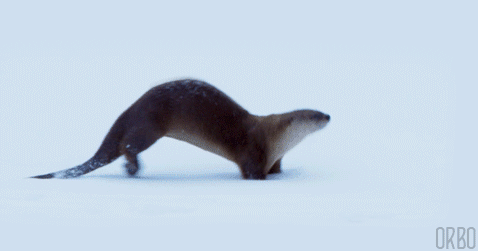
4 notes
·
View notes
Text
Unit 03: The Privilege in Nature Interpretation 🐛
What role does “privilege” play in nature interpretation? Please include your working definition of privilege.
Hi fellow interpreters! I hope everyone is having a lovely start to October and enjoying the ebbs and flows that come along with changing seasons :)
In highschool, I was introduced to the term “intersectional environmentalism”, an inclusive approach to environmentalism that advocates for the protection of both people and the planet. The term opened my eyes to a framework that deeply interwove social and environmental justice through amplifying historically excluded voices and approaching environmental education, policy, and activism with equity, inclusion, and restorative justice in mind. Without recognizing this connection, we design exclusive and harmful systems— systems where privilege is not recognized.
My working definition of privilege has evolved significantly with age through first-hand experiences, active listening of stories told through diverse perspectives, and extensive inner reflection. As a young teen, I found myself becoming highly resentful of a system that was also directly benefiting me, an awareness that drove me in unproductive circles. However, my definition of privilege currently resides in direct correlation with intersectionality, a term with roots in Black feminist activism (originally coined by Kimberlé Williams Crenshaw). Intersectionality describes how our overlapping social identities relate to social structures of racism and oppression by merging many identity markers (race, class, gender, sexual orientation, age, ethnicity, religion, disability, etc.). Together, these characteristics build every individual’s complex identity, but how does privilege come into play? There is a significant power imbalance created through norms and systems that leads to the unjust treatment or control of people (oppression), while providing direct advantage for others (privilege). Intersectionality shows that oppression and privilege cannot be reduced to only one part of an identity, but are dependent on and shaped by all aspects. These concepts link back to the established idea of “intersectional environmentalism”, an approach to nature interpretation where the role of privilege is highly considered.
Our Interpreting Cultural and Natural Heritage for a Better World textbook highlights some of the key roles privilege plays in nature interpretation, including economic, cultural, and communication barriers, lack of knowledge, and fear. The topics delve into the privilege associated with transportation to natural environments, costs when accessing interpretative sites, higher socioeconomic positions, cultural perceptions of outdoorsy activities, language used in educational material, acquiring knowledge, general safety concerns, fear of wildlife, and discrimination during participation. Clearly, privilege plays a HUGE role!
In addition to our textbook, when thinking of privilege in nature interpretation, I was reminded of the Mishkos Kenomagwen: The Teachings of Sweetgrass chapter from Braiding Sweetgrass by Robin Wall Kimmerer. The entire novel is a beautifully orchestrated gateway into Indigenous wisdom, scientific knowledge, and the teachings of plants. However, this particular chapter highlights the inequity involved in environmental academia. Indigenous knowledge holders carry valuable information about the intricate relationships and interactions between humans, animals, plants, and our environment. Yet, Western science views have far more privilege and “higher value” in environmental academia, making it challenging to incorporate Indigenous teachings into nature education spaces.
Overall, reading the textbook limiting factors for nature involvement and reflecting on Robin Wall Kimmerer’s sharings encouraged more personal reflection on the privilege I’ve carried throughout my nature interpretation journey. Nature has provided me with mental sanctuary, emotional fulfillment, spaces for physical activity, employment income, and an academic path— all of which have been rooted in remarkable privilege and accessibility to natural spaces. How lucky am I to have lived next to a conservation area? A conservation area that inspired me to pursue a Bachelor of Science in Environmental Sciences, which was initially funded by money earned by working at that same conservation area! Recognizing privilege is crucial as a nature interpreter, and I hope to continue my journey of nature interpretation through an intersectional lens.
Reference: Kimmerer, R. W. (2015). Braiding sweetgrass. Milkweed Editions, 156-166.
1 note
·
View note
Text
Hi Eric,
Thank you for the openness, honesty, and refreshing perspectives you offered in your post this week! With seemingly endless possibilities, brainstorming future plans (or ideal environmental interpreter roles) can be both exciting and super daunting. Although most prompts that question my relationship with nature encourage lots of personal reflection, I found myself struggling this week too when narrowing down exactly what I see for myself. Every new experience with nature offers a new perspective, but I’ve come to value the uncertainty with constant growth. For example, I recently learned about forensic botany at a Wildlife Club meeting— so cool! The stories told by Professor Carole Ann Lacroix about the use of plants in criminal investigations left me wanting to research more about the field. You may not have a favourite animal, but you know you are passionate, and I think passion and love for what you are interpreting is the most valuable part.
Furthermore, I loved your perspective on the hidden processes and nuances to nature that often go unnoticed! It can be so easy to walk past recurring beauty in the environment, but finding appreciation in these everyday processes is definitely something worth sharing. Squirrels are a perfect example! In particular, the University of Guelph squirrels are common campus icons. I think it is easy to forget the beautiful deeper purpose these seed cachers (and forest builders) provide to the ecosystem, along with how awesome it is to have the ability to get up-close wild animal sightings/interactions. Translating these observations about our relationships with squirrels to seeing the world on a much deeper level as a guide at a National Park sounds incredible! There really is so much nature to be interpreted and I look forward to hearing about the meaningful ways you will interpret nature for the world :)
Sam🌿
Blog 2
This discussion prompt is definitely a hard one for me to work with. I am still at the point in my life where I have no clue as to what job I want to have, I do not even have a favourite animal. I do on the other hand have a wide interest in plants and animals and I do have some thoughts about what I want to share with others through my future career.
I have always been interested in hidden processes and nuances to the environment that people may not notice at a glance. I think there is so much beauty in the environment we walk past everyday. One animal I can think of that most people ignore on a day to day basis is the squirrel. Squirrels are so common and adapted to urban environments that their activity is seen as ordinary. I too am desensitized to squirrels because I see them everyday but every so often I look at a squirrel and remember that it is a truly wild animal just like all others. Many animals keep far out of the reach of humans and so just getting the chance to see them can be thrilling. Squirrels are often seen foraging for food during the day but they do take part in other activities. I do not think most people know that squirrels help to build forests and that they do so unintentionally. When squirrels go to cache seeds for a later time they ultimately forget about some and from the forgotten seeds, new trees will grow. All animals provide a much deeper purpose within ecosystems that is not always visible and this is something that needs to be appreciated.
I want my job as an interpreter to be a guide for people. I want to show people the connections that are all around us, and how each and every animal is important to nature. Seeing the world on a much deeper level like this requires patience to not only learn but also to teach. Understanding the bigger picture and letting oneself immerse in nature can take time. I think it can be hard for people to understand the importance of nature without being taken out into nature and shown what they are being taught. As for my future job, I could picture being very remote and connected to nature, maybe working in a national park. National parks have so much wonder and beauty to be understood. I would love one day to be able to share how the landscapes in Canada were formed and how this affects things like the distribution of plants and animals. There is so much nature to be interpreted and so many different ways it can be interpreted. Whichever biological path I decide to take I will make sure to interpret nature in a meaningful way for others.
2 notes
·
View notes
Text
Unit 02: Ideal Role of Environmental Interpreter 🦗
Describe your ideal role of environmental interpreter. What might it entail? Where might it be? What skills might you need? (Keep these all-in mind as you begin to work on your assignments – tailor these to that ideal job!)
Hello fellow interpreters! I hope everyone is doing well and enjoyed the course content this week. I found myself connecting to “Chapter 5: Guiding Principles of Interpretation” and “Chapter 6: How People Learn” from our Interpreting Cultural and Natural Heritage for a Better World textbook. Completing the “What’s Your Learning Style” quiz from Unit 02 was a nice reminder of the style that navigates my world: Auditory. However, I think a personal analysis of the multiple intelligences discussed in the textbook elevates this “Auditory, Visual, or Tactical” ideation. Personally, I connect most to the Musical, Linguistic, Intrapersonal, and Naturalistic intelligences. I’m sure many of you can also relate to naturalistic intelligence, where some interpretation applications include going on nature walks, planting a garden, nature journaling (kind of like our blogs!), and identifying flora & fauna. The chapters really helped me reevaluate my own interpretation techniques and reflect on my previous experiences as an interpreter!
Last weekend, the ongoing desire to explore Guelph brought me (and some friends!) to The Donkey Sanctuary of Canada, a centre dedicated to rescuing and rehabilitating donkeys, mules, and hinnies who have been neglected, abused, or otherwise need sanctuary. We spent a wonderful three (3) hours exploring, speaking with volunteers, and learning the backstories of many sweet equines. Throughout the property, they also had lots of opportunities to access resources and educational material on donkeys, donkey-hybrids, and Ontario wildlife— a hub of nature interpretation! If you have the opportunity, I definitely recommend going for a visit (check out some photos below). I bring up this experience because if you had asked me the same prompt in high school, I would have had a very clear answer: a similarly operated sanctuary. My ideal role of environmental interpreter was rooted in public education of animal rescue, based on my previous experiences with equine education for children, fostering/rehabilitating animals, and facilitating adoption events. Domesticated animal rescue and education surrounding it still hold a very special place in my heart, and I look forward to the day when I can foster and take on a similar interpretation role once more.

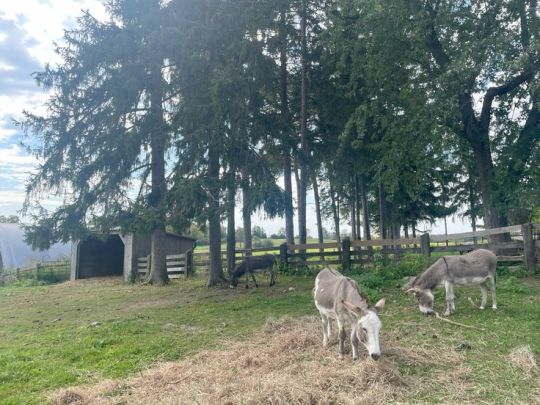

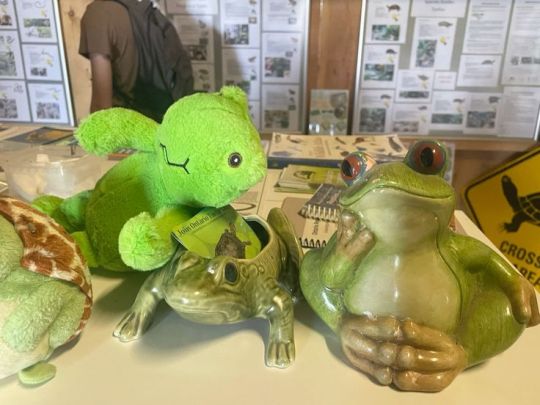
However, my “environmental interpreter dream” has since shifted as I’ve reconnected with my childhood fascination for plants and insects. These days, I imagine myself with a plant and insect research position— a lovely balance of greenhouse, lab, and fieldwork to develop sustainable solutions and contribute to a circular economy for the horticulture/agriculture sector. Reusable greenhouse growing substrates? Low ecological impact frass fertilizer? Crops with higher protein level mutations? There are SO many sustainable options to explore in this industry, an industry that highly contributes to climate change. The role itself would involve lots of observational and experimental data collection/analysis, but sharing these findings is where interpretation skills are crucial! Along with scientific reports, consumer infographics, and concluding presentations for the companies that present these ideas, communication principles such as interactive websites, monthly newsletters, guided facility tours, audiovisual programs, and live demonstrations would be shared with the public. Developing engaging/inclusive programming that shows enthusiasm for the work and visitors while embracing the wonder and beauty of nature is key. In particular, I’m passionate about highlighting the importance of the relationship between plants and insects— understanding these so-called “pests” on a microscopic level can definitely change perspective!
Overall, to be effective in my ideal role of environmental interpreter, I’ll need a mixture of both soft (collaboration, public speaking, empathy, leadership) and hard (project management, data analysis, scientific writing) skills. That being said, I think the textbook established the overriding principle of interpretation best: love. By loving the thing you interpret and the people who come to enjoy it, you have the ability to feel the special beauty it holds in the general richness of life.
1 note
·
View note
Text
Disclaimer 🐌
This blog was created for ENVS 3000, University of Guelph.
The opinions expressed here represent my own and not those of the University of Guelph.
The University of Guelph is not responsible for the accuracy of any of the information supplied by this blog.
1 note
·
View note
Text
Hi Eric,
I had a lovely time getting to know your personal experiences and relationship with nature through this first blog post. Your stories reminded me of fond childhood memories, while also offering beautiful and molecular perspectives on how we are interconnected to the natural world— so insightful!
In particular, I connected to your initial story of childhood interest in snails and caterpillars. Finding fuzzy caterpillars to observe, “rescuing” worms that found their way to the sidewalk after a rainstorm, or building snail habits out of materials from the recycling bin definitely kept me busy too. I think these young fascinations with little critters helped us recognize all the life that surrounds us (even if that was through poking their poor eyes).
We also share a similar story in regards to vegetarianism. Although three (3) grades apart when we made the change, we were both inspired by a love for animals and disappointment in the suffering (both small and large scale) the meat industry causes. Personally, this transition led me to lots of research about our relationships with animals, ethical care, and climate change associated with the meat industry. These topics definitely influenced my desire to keep learning about the environment and sustainability, inspiring me to pursue an environment-focused degree. I’d love to know if you had a similar experience!
The trip you took to Hawaii this year sounds amazing! I can only imagine the huge range of wildlife you witnessed while snorkeling, and I'm glad to hear the experience brought your connection with nature to a new level.
Thanks again for sharing :) I'm looking forward to learning more about your interactions with nature this semester!
Sam🌿
Blog Post #1
I have always had an interest and need to connect with nature ever since I was a child but my care for it has evolved over the years. My earliest memories interacting with nature were when I started collecting snails and caterpillars at probably just 4 years old. My mom would buy me small plastic containers for me to house the critters I collected. One of my favourite things to do with the snails was poke their little eyes on the tip of their stalks and watch as they recede into the body of the snail. It is funny to look back and think how interested I was in such a small uncleanly creature. I would put grass and rocks in the container hoping that it would make the space more comfortable for the snails or to provide food for them.
When I was in grade 6 I decided to go vegetarian as I could not deal with the ways that animals were killed for food. I later learned how much the meat industry impacts the environment and specifically land usage. I wish the world could be like it was before humans urbanized the planet, but nature could have so much more room if people just changed their diet.
The summer after grade 10 I worked as a gardening assistant at a food centre. At this point in my life I hadn’t put in an hour of gardening so this was a learning curve. I not only learned what plants look like before we consume them, but I also learned the diseases they interact with and the pests that consume them. Gardening isn't as simple as one might think, you have to work with nature and respect its boundaries. My relationship with nature became more spiritual with this job. The energy moves through the soil and into the plants and then we eat these plants as the final process. Those cells are broken down and become part of our cells, we make DNA out of their DNA, it is quite fascinating.
On my trip to Hawaii this year I was able to connect with nature in a different way than before. I spent many hours snorkelling on the surface of the ocean just staring down at the reef which was teeming with life. There were so many different kinds of corals and sea stars that I have only been able to see in an aquarium but here they were out in nature where they may have been for millions of years. I found myself drifting over the reef in awe every time I went snorkelling.
Throughout my life, my dad has offered me a sense of place in nature. He has always loved going on family hikes and sharing his knowledge about the surrounding area. I remember one time we walked past this giant boulder at the bottom of a hill in a forest and he described how it would have been brought there by a glacier.
7 notes
·
View notes
Text
Unit 01: Relationship with Nature 🐿️
Describe your current relationship with nature. How has this developed/evolved? Who offered you “a sense of place,” as described in our textbook?
Hi everyone! My name is Sam (she/her) and this is my third year in the Bachelor of Science in Environmental Sciences (Ecology) program here at the University of Guelph.
Like many, my positive relationship with nature developed from a young age. My fondest memories from childhood are homed by forests, rivers, and family gardens. Observing lily pads while canoeing with my mom, petting banded wooly bear caterpillars Pyrrharctia isabella on hikes, thanking trees for letting me climb their branches, and staying up late reading so I could identify every shell I found on the beach. I felt a strong urge to nurture nature as it did for me, despite the fact I had so much growth ahead.
The summer before highschool I started volunteering as a camp counselor at a farm on the Niagara Escarpment, where I found my “sense of place” in nature surrounded by free-roaming chickens, acres of horse pasture, and a group of children eager to learn about forming relationships with animals. Around the same time, I attended “Discovery Vet School” at the University of Guelph, which opened my eyes to the plausible academic future I had in the environmental sector. One of the lectures focused on the ethics of the meat industry; needless to say (against my family’s wishes) my stubborn grade 9 self was vegetarian by the time I got home— an ethical decision that has stuck with me these past seven (7) years. In highschool, I also started volunteering with and fostering for the Humane Society and private animal rescues. With a focus on neonatal kittens, my desire to research the biology and behaviour behind animals skyrocketed. At the same time, I was mesmerized by how deeply bonded I felt to each individual in my care (over 50 cats and kittens by the time I was moving away!). These deep bonds transitioned to plant life too. I started working for a local garden centre and conservation area in my last year of high school, which brought along incredible mentors and life-long friendships built on the foundation of a love for nature. Every plant, animal, and component of our natural environment was solidified in my mind as a someone instead of a something.
Furthermore, I spent Summer 2023 as a full-time Plant & Biocontrol Research Assistant at Vineland Research & Innovation Centre, where I contributed to a variety of experimental projects involving plants, insects, and growth substrates. Whether I was identifying/tracking microscopic insects, testing soil pH levels from Ontario conservation areas, conducting biostimulant fieldwork, or caring for hundreds of greenhouse plants, each day took my passion for ecology to a more feasibly impactful level— I loved it! However, this newfound “measurement of impact” came from a western science perspective spent in labs where all my observations were easily transferable to a spreadsheet. When I was tired from long days of work, it was still nature that would soothe my aches and cradle my mental exhaustion. Evenings spent digging around in my home garden and harvesting vegetables grown without the grand purpose of contributing to scientific reports. Evenings spent reading in the grass accompanied by my family cat and best friend, Delilah, while watching insects crawl between the words of the book I was reading. Evenings spent climbing the backyard tree that had watched me like a grandmother through every stage of life, even though I couldn’t swing on her low hanging branches like I once did.
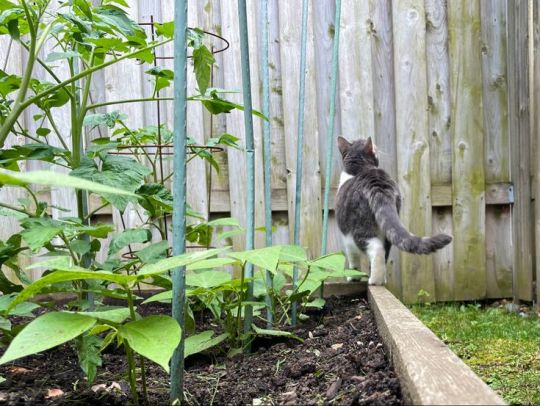
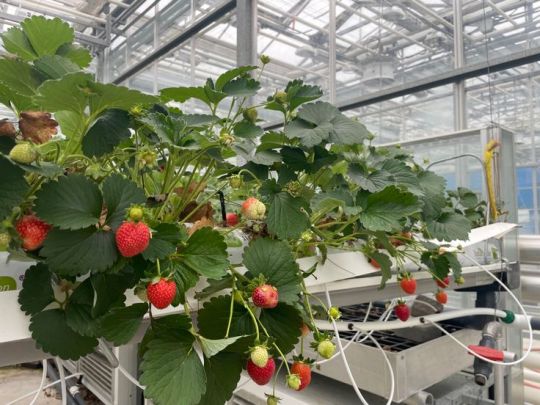
These moments after work, coupled with summer weekends spent hiking or kayaking, lead my story to right now. I’ve returned to the University of Guelph, taking on the role of ecology student for my third year. My “sense of place” within nature has truly blossomed here, where I spend my academic life studying our complex ecological world and my personal life finding natural influences in the music, clothing, activities, and friendships I immerse myself in. The relationship I share with nature is constantly evolving, and I’m looking forward to exploring the intricacies (and sharing them with you!) during our Nature Interpretation course this semester :)
5 notes
·
View notes